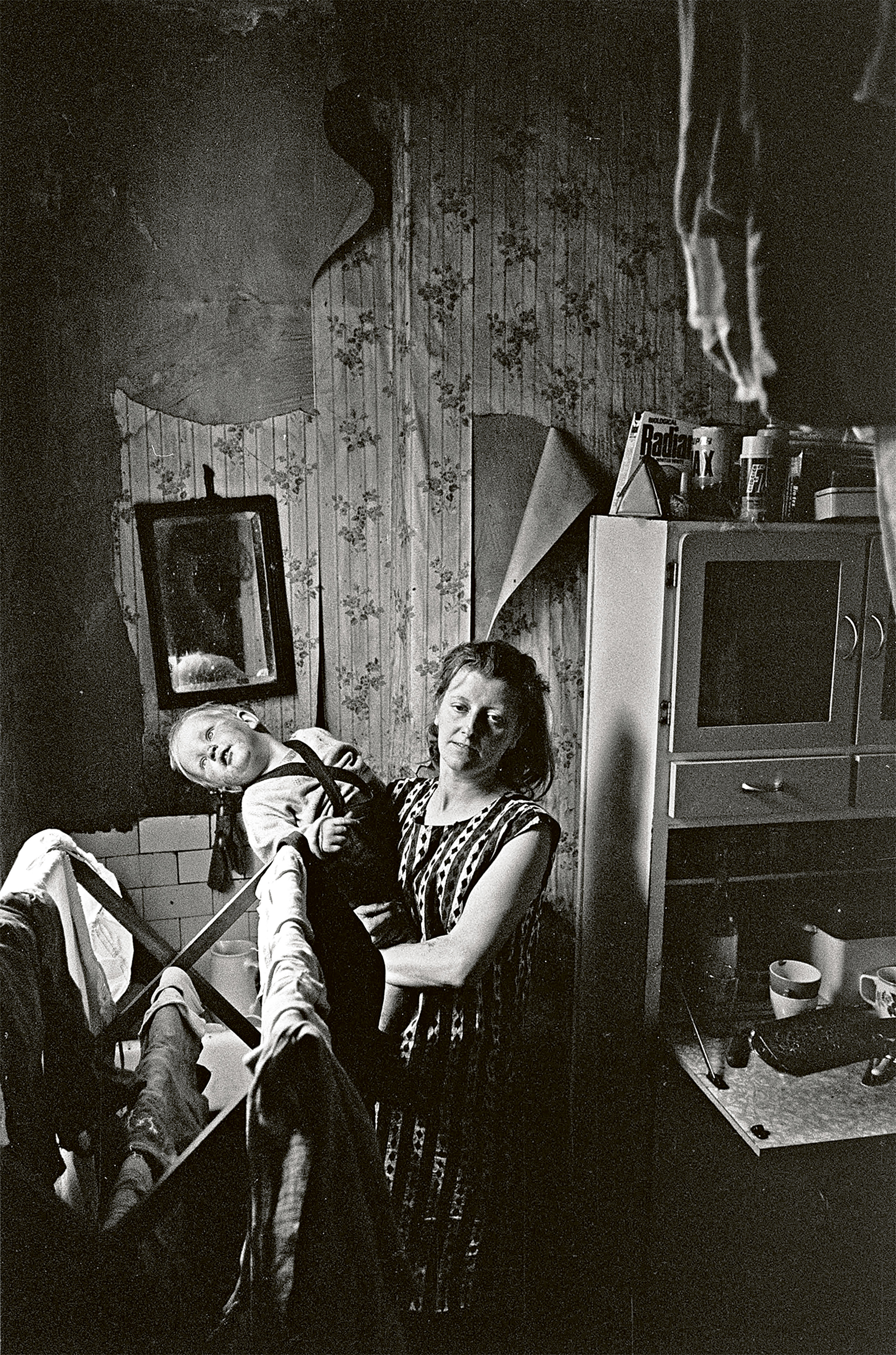Mother and Child, Liverpool, 1971, from the series Home © Nick Hedges
His photographs of Birmingham’s late-1960s housing crisis transformed how the urban poor were visualised in the UK. We catch up with the veteran documentarian
Born in Bromsgrove, Worcestershire, in 1943, Nick Hedges studied photography at Birmingham College of Art. For his final project he worked with Birmingham Housing Trust on an exhibition about the city’s poorly housed, and after graduating in 1968 he spent four years as a photographer and researcher for Shelter, National Campaign for the Homeless.
In the 1970s Hedges worked with organisations such as Half Moon Gallery in London, Newcastle’s Side Gallery, Camerawork and Ten.8 magazines, and from 1980 to 2003 he was head of photography at West Midlands College of Higher Education and the University of Wolverhampton. His work for Shelter was shown at London’s Science Museum in 2014, and in 2021 was published by Bluecoat Press as Home, alongside another book, Street. In 2016 Hedges was a contributor to the Channel 5 documentary, Slum Britain: 50 Years On.
“I don’t think historical material should be celebrated to the detriment of contemporary documentary work, but I do think it’s important to look at history”
What was it like making work in the 1960s and 70s?
I always maintain I was fortunate to be born when I was, because in the 1960s we believed a revolution was possible. I was working with people who thought it was possible to change the situation the country was in. It was invigorating and exciting. I still think that is necessary, it still exists today. It’s particularly interesting now to see issues to do with race, gender and sexual identification coming forward and being expressed strongly. That’s very encouraging. I still believe we can change the world.
How do you feel about your campaigning work now? Can this kind of work sometimes stigmatise the people it tries to help?
That was an issue we discussed, especially at Camerawork and Ten.8. It’s one of the reasons I’ve enjoyed making the books because I’ve been able to correct that to some extent – to include photographs that show a wider view.
Why did you make Home and Street?
I had a major medical incident and stopped teaching in 2003. It gave me time to look at my archive, and I realised I had a significant amount of material that had never been published. Over the last few years I’ve been looking back rather than producing anything new. I don’t think historical material should be celebrated to the detriment of contemporary documentary work, but I do think it’s important to look at history. I want my work to be accessible to the public, not just to academics and researchers, because it’s part of a people’s history, and interpreting our past can help us understand our present and predict our future. We shouldn’t forget that. Since its beginning, photography has been used to document people’s lives. If you go back to the 17th century, images were very exclusive, the preserve of the rich. Photography is much more democratic.
nickhedgesphotography.co.uk
bluecoatpress.co.uk

